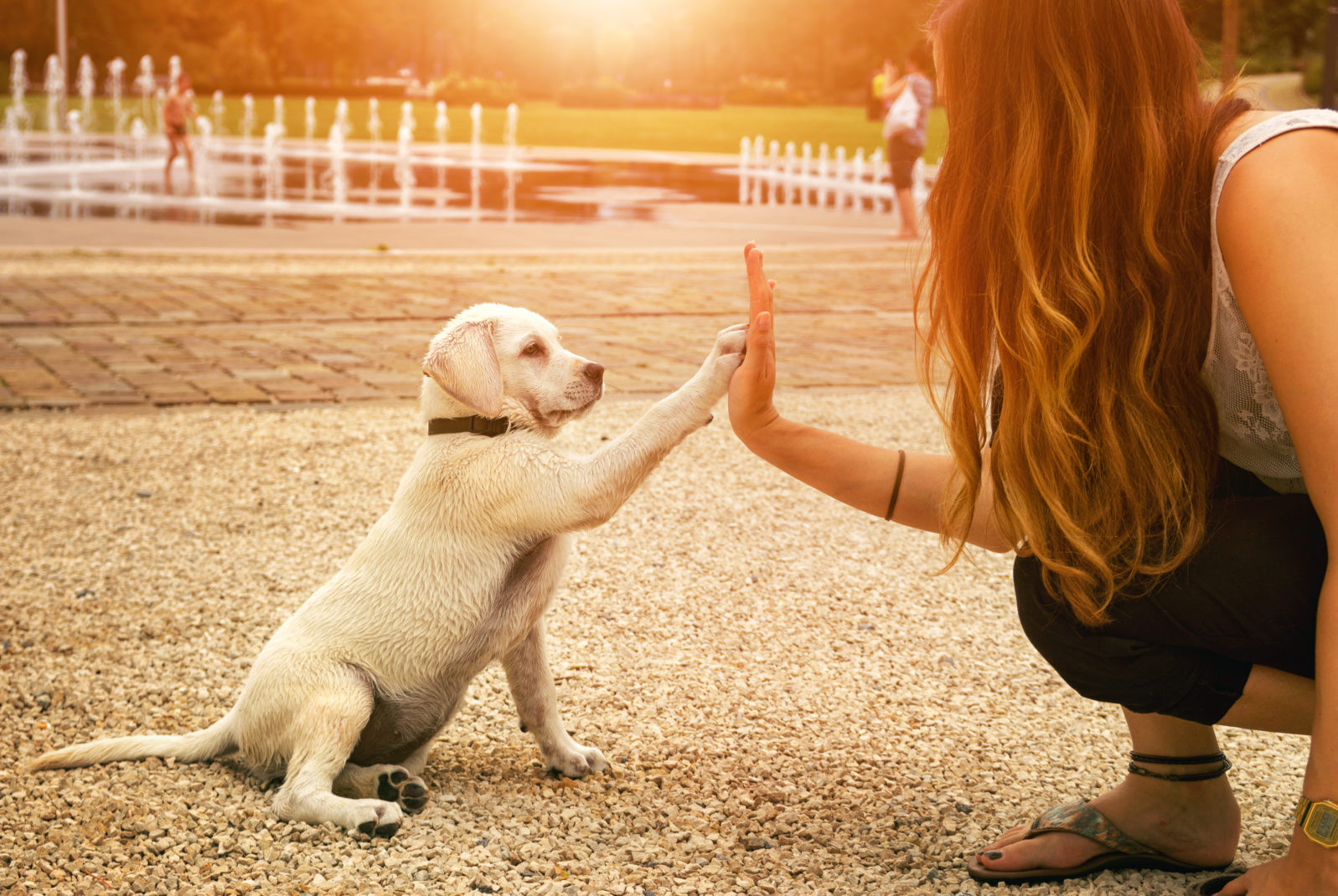Researchers: Dogs Are Hardwired To Understand Us
Recent research on nearly 400 Labrador puppies reveals a genetic basis for a tendency to look to humans for guidanceConsiderable mystery surrounds the question of why dogs achieve a close emotional relationship with humans. Chimpanzees are genetically very much closer to us but few of us bond with them. So the ability is not obviously genetic — but recent findings point to at least one genetic component: Puppies seem naturally adapted to learn the significance of a common human communication method, pointing:
Scientists have known for more than 2 decades that dogs understand the logic behind a surprisingly complex gesture: When we point at something, we want them to look at it. That insight eludes even our closest relatives, chimpanzees, and helps our canine companions bond with us. But it’s been unclear whether pooches acquire this ability simply by hanging out with us, or it’s encoded in their genes. “It’s the one piece of the puzzle we don’t have evidence for,” says Evan MacLean, director of the Arizona Canine Cognition Center at the University of Arizona.
David Grimm, “These adorable puppies may help explain why dogs understand our body language” at Science (March 17, 2021)
It’s not as if dogs have fingers themselves. But even if they did, it might not help, according to other research:
Human infants typically start pointing at around 11 or 12 months of age, and when you point for them, they understand it immediately. Neither apes nor any other animals use the pointing gesture in their natural communication. So if a child is looking for something and you point behind the couch, they know you are intending to help them find the thing behind the couch.
With chimps, if they’re looking for something and you point … they’re clueless, absolutely clueless. They don’t understand that you’re trying to help them.
Duke University, “Michael Tomasello: What makes humans human?” at Phys.org (April 9, 2019)
So chimps don’t understand a gesture they can use but dogs understand a gesture they can’t use. The University of Arizona team pursued the question by testing 375 eight-week-old Labrador and Golden Retriever puppies in training to be service dogs. When and how did the pups come to understand pointing as a meaningful human gesture?:
The researchers put the puppies through three tests. First, they performed a classic pointing experiment, placing the young dogs between two overturned cups—one containing a treat—and pointing to the one with the treat …. The animals understood the gesture more than two-thirds of the time, approaching the performance of adult dogs. But they didn’t get any better over a dozen rounds, suggesting they were not learning the behavior, MacLean says.
David Grimm, “These adorable puppies may help explain why dogs understand our body language” at Science (March 17, 2021)
Of course, the evidence that the behavior might originate in genes does not necessarily mean that it is found in the puppies’ wild ancestors. The second test measured eye contact with a friendly human speaking directly to the puppy. The puppies averaged six seconds. That is rare among wolves, we are told, and among mammals generally. In many species, eye contact is a form of aggression, not of communication in general. But the puppies treated it as friendly communication.

One test the puppies usually failed is asking for help from a human. That, apparently, was something they had to learn by experience:
In a final test, the researchers taught the puppies to find food in a plastic container, then sealed it with a lid. In contrast to adult dogs, which usually give up after a few seconds and look to humans for assistance, the pups rarely gazed at their scientist companions for help. “Puppies seem to be sensitive to receiving information from humans,” as the other experiments show, MacLean says, “but they may not yet know that that they can solicit help from us.”
David Grimm, “These adorable puppies may help explain why dogs understand our body language” at Science (March 17, 2021)
In short, the puppies usually treated humans instinctively as sources of information when the humans offered it. But they would need to learn to ask for information if it wasn’t immediately offered.
After an analysis of pedigrees in relation to performance, the researchers concluded that 43% of the variation in performance between puppies was inherited — not from wolves but from many generations of dogs bred to co-operate with people. They hope to go on both to study more varieties of dogs and to identify some of the genes that contribute to communicating with humans.
One researcher consulted by David Grimm for Science warns, however, that traits like the ability to pick up on explicitly human cues probably involve hundreds of genes. Scientists won’t find a simple on-off switch, just a suite of genes that make one outcome more likely than another.
The remarkable thing about research findings from studies like these is that they increase, rather than decrease, wonder at the remarkable companionship between humans and dogs.
A service puppy’s first week in training:
The paper is closed access.
You may also enjoy: In what ways are dogs intelligent? There is no human counterpart to some types of dog intelligence.
